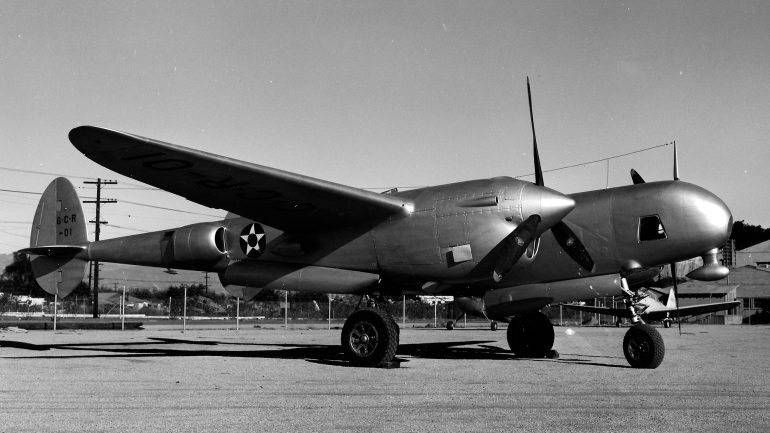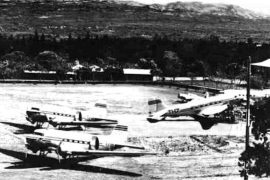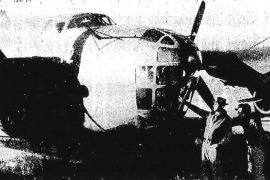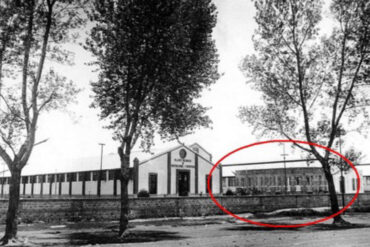Often described, both by a proud citizenry and foreign observers, as the “Switzerland” of Central America, the serene and beautiful country has, indeed, managed to craft a destiny that has set it apart from the often tumultuous paths of its immediate neighbors.
Costa Rica has also proven an exception to the prevailing class patterns characteristic of not just its neighbors on the isthmus of Central America, but throughout Latin America as a whole. In most of her sister Republics, the so-called “middle-class” of the large urban areas has always been an extension of the historically dominant land-owning oligarchy. In Costa Rica, however, that same “class” has been unusually strong and numerous, and has long since established a sense of identity quite distinct from the oligarchy – towards which it has been quite often antagonistic. Highly articulate and well-educated by Latin American standards, by the end of WWII, as elsewhere in Latin America, organized labor and a substantial number of professionals, university students and white-collar workers were prepared to assert their right to a voice in their nation’s affairs and, in a nutshell, these forces, combined with the emergency represented by the World War just ended, led to the brutal civil war of 1948.
An amiable deception, believed almost to a body by most Costa Ricans to this day, is that the country has “never had an Army” or, by extension, an Air Force. Neither of these oft repeated assertions is correct.
As an ally of the United States, the Calderón Guardia administration of the early 1940s built, for the first time, a somewhat more professional national Army for the small country, despite the tradition of a distinct opposition to a standing military force. The country also accepted a U.S. military training Mission from the U.S. as well as modest quantities of Lend-Lease Army equipment, and as noted in the Sixth Air Force chapter, hosted a USAAF Detachment at San José. The capital’s airport, La Sabana, was also witness to frequent visits throughout the war, both by transiting aircraft, and as a popular “R & R” destination – including a number of visits by P-38s operated by the six squadrons of the XXVI Fighter Command. Its proximity to the Canal Zone gave the country significant strategic importance as well.
Costa Rica had toyed with the notion of an “aerial police force” as early as 1930, and, indeed, issued scholarships to a number of her native sons to study abroad during the 1930s, WWII and afterwards. The country also enjoyed a modest air transport infrastructure, and even a few privately-owned aircraft going into the WWII years1, but did not acquire any aircraft under Lend-Lease, the solitary nation in Latin America (other than Argentina) to have not benefited from this largesse. She did, however, take advantage of training opportunities for aspiring airmen, and sent several to USAAF schools.
The post-war revolutionary activity in the Caribbean, spurred on by the defeat of the Axis dictatorships, had started with the abortive Cayo Confites expedition intended to oust Rafael Trujillo in the Dominican Republic. The revolutionaries, who soon came to be cited as the Caribbean Legion, which had managed to extricate themselves in some disorder from the Cuban-based debacle2, managed to continue their crusade – but now from a new principal base.
The scene shifted to Guatemala, where the sitting President, Juan José Arévalo was driven by two central goals that complemented one another: his long-standing dream of a Central American federation (probably presided over by himself), and the coincident elimination of the old-guard dictatorial regimes of the region.
Arévalo gave refuge to the leadership, their arms, and the rank-and-file of the failed Cayo Confites force. He even managed to expedite the transfer of most of General Juan Rodríguez’s arms (except his valuable aircraft, including P-38s) from Cuba to Guatemala, using quite blatantly two Douglas C-47s then in the Fuerza Aérea Guatemalteca (FAG) inventory at the time to facilitate this highly irregular transfer. Shortly, the elderly General, who was installed in very nice surroundings in Guatemala, was besieged by a parade of suitors who wanted his arms and money to finance their own local expeditions against various tyrants. These included delegations from Nicaraguan, Honduran and Costa Rican opposition groups. That headed by Rafael Ángel Calderón Guardia of Costa Rica gained his support, but only as one of the signatories of what became known as the Caribbean Pact – a pledge by organizations led by Rodríguez himself, others from Nicaragua, and Figueres of Costa Rica, to form a revolutionary team and pool their resources for the achievement.
Figueres, for his part, decided to launch what he labeled the War of National Liberation in Costa Rica on March 12, 1948. His Plan Maíz included, as its principal objective, the seizure of the airfield at San Isidro del General, about 75 miles from San José. The subsequent, extensive use of aircraft in the civil war that followed is described in detail in the book by this writer and Mario Overall, The Caribbean Legion, released in early 2019. (Alaso available in PDF format from the LAAHS, for a small donation.)
No sooner had Figueres and his forces defeated the Costa Rican central Government and Army of Picado (and the brothers Calderón Guardia) and forced them to flee to neighboring Nicaragua, a plot was forged to retake the country before Figueres could consolidate his victorious government.
Often cited as the Counter-Revolution, and realizing that his hodge-podge of civilian airliners and general aviation aircraft hardly constituted as “air force” that could have any hope of countering the neighboring air arm of Nicaragua, which would almost certainly aid the exiles at the behest of dictator Somoza, the Figueres government dispatched none other than the veteran – and nearly legendary – flyer and airline pioneer Roman Macaya L. to Los Angeles, California in September 1948 to secure ‘combat’ aircraft for what was termed, by October, as the Costa Rican Military Air Force (Fuerza Aérea Militar Costarricense).
According to Macaya, “…I purchased two Lockheed P-38s, which I judged were able to land in the short field of La Sabana at San José, a Douglas A-24B, a North American AT-6, and a Douglas B-18. This last bomber I flew to Costa Rica and later flew in the counter-revolution.”
In fact, the U.S. State Department had actually approved, in addition to the single A-24B, AT-6 and B-18, the sale of not less than five P-38 series aircraft as early as October 1948, their application for these having been dated August 16, 1948. However, in the event, the USSD only approved Export Licenses for two of the “P-38s”, the A-24B and the B-18. A declassified CIA report, dated November 19, 1948, stated that “…overhaul and repairs to four P-38s and one A-20 (probably an error for the A-24) will be completed this week and the planes will be ferried from the U.S. to San Jose. The return trip will be made via Havana, Cuba, where the planes are to be armed, although approval by the Cuban government has not yet been received.” The language of this report therefore suggests that Figueres had struck some sort of arrangement with the Cuban government to acquire, ironically, some of the very guns that the Cayo Confites conspirators had amassed for their aborted assault on Trujillo’s Dominican Republic. Costa Rican pilots waiting in los Angeles to ferry the aircraft back home, according to the CIA report, included Raul A. Velasco, Otto Escalante, Jorge Morales, Daniel Calvo and Carlos Maduro.
At least two of these aircraft were, in fact, F-5Gs. The first, NL-57492 (44-53015, MSN 422-8270), had been accepted by the USAAF as a P-38L-5-LO June 1, 1945, but was immediately flown to the Customer Modification Center at Love Field, Dallas, Texas, where it was converted to F-5G configuration. Following this, and without a mission, it was flown by an ATC pilot to the Kelly Field, Texas temporary storage facility before being flown to Kingman, Arizona, where it was turned over to the RFC January 24, 1946.
Not long afterwards, on February 25, 1946, the exceptionally low-time aircraft was sold by the RFC to Rex Houston Mays of Long Beach, CA, for $1,250.00. By December 18, 1947, when he sold the aircraft to Robert B. Utterback, also of Long Beach, the aircraft had been issued the Experimental Category License NX-57492. Oddly, there is no Bill of Sale from Utterback for this – or any other F-5G – to the Costa Rican Government. However, by November 1, 1948, Mayor (Reserva) Manuel E. Guerra, a former TAN pilot in Costa Rica, had arrived in California to take delivery of this aircraft, apparently at Concord, California. A U.S. Intelligence Report (IR-114-52 dated July 10, 1952) stated that Costa Rica had paid a total of $40,000 for the F-5G and the B-18, the funds actually having been made available by General Rodriguez, on the condition that, after things were sorted out in Costa Rica, they would become property of the Caribbean Legion, and that the Costa Rican agent who handled the purchase was Arturo Rivera, in company with the redoubtable Macaya.
When delivered, this aircraft bore the Costa Rican serial G.C.R.-01.
The second F-5G, which appears from extant photos to have had a conventional P-38L “gun” nose reinstalled, and marked only as G.C.R.-02 (one source says simply “C.R.-02”), crashed near the tiny airfield at the far west-Texas town of Crane, on Christmas Eve 1948, sustaining severe damage to the nose when it overturned. The aircraft was being flown by Raul Velasco at the time, and he was apparently enroute to either Brownsville or San Antonio after having picked up the aircraft at Glendale, California when he suddenly lost his port engine. As he spiraled down for an emergency landing near Crane, his starboard engine also failed. However, a local man, Darrell Tomlinson, who was at the scene, stated that he neither smelled nor saw any fuel leaking from the aircraft, and strongly suspected that Velasco had simply got lost and exhausted his fuel. Several local pilots who observed the incident said that Velasco had, in fact, made a pretty good dead-stick approach to the small Crane air strip after having circled briefly. However, his wheel tracks showed that he had applied the brakes very hard, probably to avoid a fence near where it nosed over and, had it not been for this, he probably would have made a decent roll-out. To the embarrassment of the Costa Rican Government and Velasco, he could produce no aircraft identification, U.S. Registration – or authorization to fly or for export! This aircraft has eluded all efforts at identification but is believed to have been bought surreptitiously from Jack Hardwick at a little field near El Monte run by two brothers, who just happened to be sons of William Randolph Hearst and Marion Davis. Despite the extensive damage to the central fuselage area and nose, Velasco somehow survived the accident. The remainder of the aircraft was remarkably undamaged, and was somehow hauled to a hangar at the small Crane airfield, where, in fact, both main tanks were found to be empty. The fate of the remains is unknown.
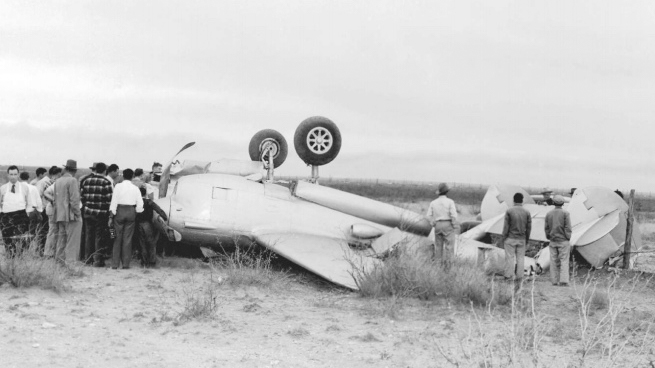
It appears that Costa Rica acquired a third Lightning, as, although the mysterious G.C.R.-2 had crashed at Crane, Texas on December 24, 1948, by January 1, 1949, barely a week later, a U.S. intelligence summary showed the country with two P-38s.
Meanwhile, back in California, the solitary A-24B had also crashed while being test flown by a poorly checked-out Costa Rican pilot (unnamed) at Van Nuys and thus, it appears that, of the five aircraft purchased, only the single F-5G (G.C.R.-01), the B-18 (G.C.R.-05, later TI-205, probably the former NC-67852) and the AT-6 (G.C.R.-04, later CR.-10, also purchased at Long Beach) actually reached Costa Rica. In spite of this, however, the Costa Rican Director General de Aviación (DGAC), Capitán Mario Facio, had informed the local press on October 20th that their new ‘military air force’ would have at least three AT-6s and three P-38s, and that it would be headed by Otto Escalante Wiepking. The actual aircraft on hand with the tiny force were adorned with what appeared to be a form of the pre-WWII U.S. style national insignia, except that the colors were reversed. The disk on which the white star was superimposed was red, and the central “dot” blue – red, white and blue also being the Costa Rican national colors.
The Figueres government had planted stories in the local press which boldly implied that these aircraft being acquired for the defense of the country were being “loaned” to Costa Rica from the U.S., and recalled the prowess of the former USAAF P-38s that had visited the country from Panama in 1945, and that as many as 40 were being made immediately available. This, the U.S. Embassy felt, was nothing more than a propaganda subterfuge to disarm internal critics as to the actual purchase of the handful of aircraft by the new government, a move which not have set well with the general populace, which still embraced the customary Costa Rican abhorrence of a standing military establishment.
It is clear that the B-18, which had been armed, played a part in the resistance to the small expedition of between 100 and 150 men launched with the support of Somoza into Costa Rican territory on December 9, characterized as “Costa Rican Exiles.” However, it is not clear if the F-5G – which had apparently been armed in some modest fashion by the excellent crews at the former TACA facility at La Sabana – or the AT-6, took any active part in the recovery of the four towns occupied by the Calderonista invaders, but it cannot be discounted.
With the crisis finally resolved, largely due to the intervention of the new O.A.S., the small ‘military air force’ almost immediately went dormant, as the few qualified pilots – all reservists – wanted to get back to their commercial airline careers (and making a living) and, by July 1, 1949, a U.S. Air Order of Battle showed only one “P-38” still owned by the government. The same was true as of January 14, 1950, by which time it was noted that the three aircraft were “…being maintained and run-up periodically by TACA”. By January 31, 1951, however, the Government was seeking to dispose of its single remaining P-38, and an Airgram from the U.S. Embassy of that date described it as “…badly deteriorated and unflyable.”3 At that same juncture, the Guatemalan Government bid on the aircraft, offering $5,000 “as is.”
If Guatemala (read: “Caribbean Legion”) actually acquired a Costa Rican P-384, it must have been aborted as outlined in that brief Chapter, as by July 1, 1952, a U.S. intelligence report still showed the Costa Rican Government in possession of a “P-38, which has not been flown or run for several years.” This was all resolved, for G.C.R.-01, however, on November 11, 1952, when Enrique Velásquez Díaz Granados, the signing as the “Proveedor Nacional de la República de Costa Rica,” at last sold the well-traveled aircraft to Edward C. Waterman, who was a resident of Balboa Heights, Canal Zone (and almost certainly therefore an officer of the Panama Canal Administration, nearly all of whom were the exclusive residents of this manicured residential area) and who had apparently bid on the aircraft (No.2986) for a bargain $510.00. Waterman then reapplied for U.S. registry as N9957F.
Then, on July 20, 1954, Norton sold the aircraft (significantly, from the Canal Zone) to Halsey-Webb, Ltd., 516 Fifth Avenue, New York, NY, who secured the aircraft with a chattel mortgage issued by Chase National Bank – perhaps, significantly, along with P-38L N69902 (44-53180). Chase released the note on March 21, 1955 on both aircraft. The whereabouts of the aircraft during all of this is unclear. However, on June 29, 1955, Halsey-Webb sold N9957F to the Hycon Manufacturing Company of Pasadena, California, and the aircraft had gone almost full-circle. Hycon then further modified the nose and, on June 25, 1962, sold N9957F to Donald E. May of Phoenix, AZ, for $1,666 – only $416 dollars more than she had sold surplus for in 1946, who registered the aircraft as P-38L-5-LO. She was sold once again on June 19, 1963, by Dorothy May, on behalf of Don May’s Estate, to Ben W. Widtfeldt, doing business as Desert Aviation, Inc., also of Phoenix, but this time for “10.00 and other valuable considerations.” Finally, on June 27, a week later, Widtfeldt sold N9957F to Frank Tallman of Palos Verdes Estates, California.
More owners followed. On February 18, 1966, Tallman sold the aircraft to the Rosen-Novak Auto Company in Omaha, Nebraska who, in turn, sold her to W. H. Erickson, kr., of Minneapolis, MN on May 22, 1967. Then, on November 9, 1970 she was purchased by David C. Tallichet of Long Beach, before passing to the Military Aircraft Restoration Corp. of Long Beach, who prepared the aircraft for her present home – the National Museum of the United States Air Force – who apparently do not have a clue as to this extensive history.
While the adventures of the government owned P-38s were surrounded by intrigue and secrecy, the Mark Hurd Corporation also used P-38s configured for aerial surveuy work within the republic between 1964 and 1966.
This is an excerpt of the book “P-38 in Latin America” by Dan Hagedorn and Julio Arrospide. You can acquire the printed version here and the Kindle (digital) version here.
Notes
- For a nation its size, there were 38 aircraft on the Costa Rican Civil Aircraft Register by 1938. There had been not a single one in 1927.
- See chapter 7 of the book “P-38 in Latin American” by the authors.
- In fact, they had been described this way by a leading newspaper, La Nacion, as early as June 27, 1950.
- See Chapter 10 of the book “P-38 in Latin American” by the authors.

